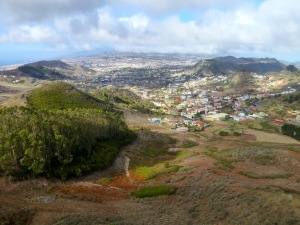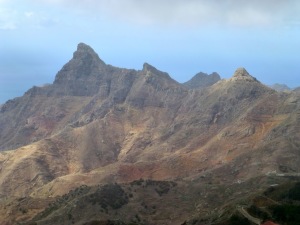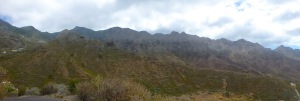Ocean island or hotspot volcanos generally go through several distinct magmatic phases. The shield stage represents the first stage major episode of magmatism and nearly 95% of the volcano is formed during this stage. The rate of eruption is also maximized during the shield stage and is dominated by tholeiitic basaltic eruptions. Following the shield stage is the post-shield stage which is often dominated by alkalic basalt. Although this stage is generally more explosive the volume of erupted material is significantly less than that of the shield stage. After the post-shield stage, the volcanic island experiences a large time gap with little to no volcanic eruptions. During this erosional stage, the magmatic juices deep in the crust are brewing for one final show of force during the post-erosional rejuvenation stage. These eruptions are extremely alkalic and are generally very rare; however Tenerife has experienced the greatest volume of post-erosional eruptions than any other hotspot volcano.
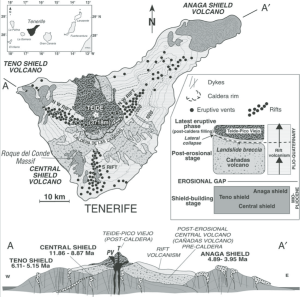 |
| Geologic map of Tenerife (from Carracedo et al., 2007) |
Tenerife is currently at the latest stage of its volcanic development. This is in contrast to the more western islands are still in the shield stage and have not reached the same level of development and the eastern islands that have already in the advanced stages of erosion. The island of Tenerife was built through the coalescence of three large shield volcanoes, the Roque Del Conde (11.86-8.87 Ma), Teno (6.11-5.15 Ma), and Anaga (4.89-3.95) shields. Shortly after the three shields coalesced, the shield stage was followed by nearly one million years of magmatic quiescence accompanied by significant erosion.
These shields are dominated by basalt, ankaramite, and basanite lavas with minor amounts of pyroclastic rocks (cinder cones and such). All of these are cut by basaltic and diabase dikes. Each of the shields have distinct trace element patterns indicative of separate magma sources with differing degrees of partial melts.
 |
| The town of San Andréas |
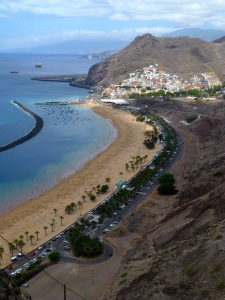 |
| Note: this beach is FAKE! The sand is imported from the Sahara Desert. |
![]() This work is licensed under a Creative Commons Attribution-NonCommercial-ShareAlike 4.0 International License.
This work is licensed under a Creative Commons Attribution-NonCommercial-ShareAlike 4.0 International License.

